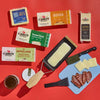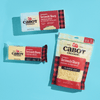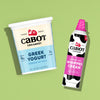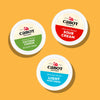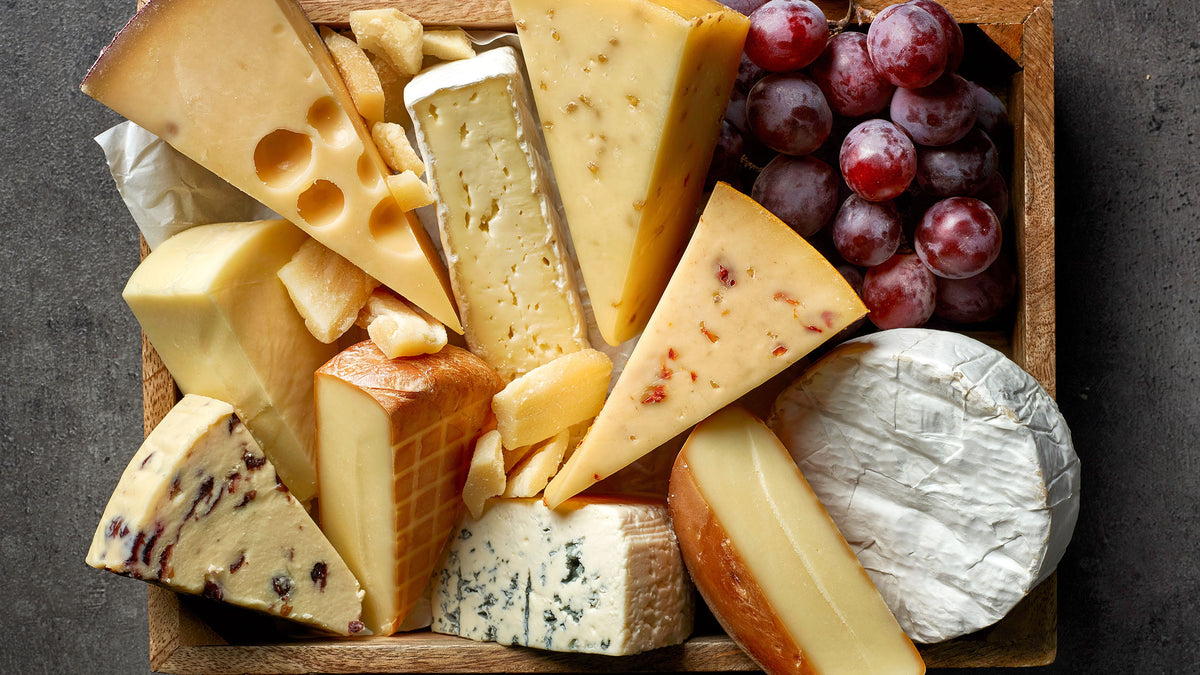
Cheese Traits & Origins
Unraveling the History and Birthplaces of Your Favorite Cheeses
Loved by people the world over and enjoyed alone or as part of many delectable recipes, cheese comes in a wide array of tastes and textures to satisfy almost any palate. Cheese is an integral part of many gastronomic cultures, including in countries across Europe, the Middle East, and South America. As well as being widely consumed and featuring in a plethora of dishes, many cheese-loving countries also have long traditions of making cheese using various methods. The popularity of cheese is not typically limited to just one type; where cheese is widely eaten and made, it is common to find rich regional variations.
This article takes you through the fascinating history of cheese and looks at the origin of cheese-making. If you have ever wondered where cheese was invented, who invented cheese or what cheese was first made, this article's just what you have been looking for.
Where Did Cheese Originate?
Although there is no clear agreement on how, where when and why cheese was born, the earliest evidence of cheese-making dates to about 5500 BCE. Unearthed pieces of pottery from land in modern-day Poland were coated with processed milk fats. Analysis suggested that these fatty traces had undergone preservation techniques using both acid and heat, both of which are vital in cheese-making procedures. Such evidence suggests that locals were producing and consuming cheese during that era.
Written and pictorial evidence also shows that cheese existed around 2000 BCE in ancient Egypt, while records from the 5th century BCE indicate that cheese was being produced by this time in Central Asia as well as in ancient Rome and Greece. With such a geographic spread over an extended period, there is no definitive answer to the question of where cheese originated.
So, how was cheese invented? Nobody is quite sure how cheese was created. However, several theories exist as to the origin of cheese. Some experts believe that cheese was first created several thousand years ago in the Middle East. Supporters of this theory believe that ancient peoples began to domesticate animals and found that adding acid to milk could help it to last for longer. They believe that, as this method of milk preservation would have caused curds and whey to form, humans of yesteryear discovered that separating the curds from the whey would allow them to press the curds together into a solid edible mass of cheese.
A different theory seeks to answer the question of how cheese was made: this theory suggests that ancient people discovered by chance that leaving milk in a warm spot would make it go sour and curdle, resulting in cheese.
Regardless of its formation, cheese played a prominent role in several ancient civilizations. For example, as well as being widely consumed by people of all social levels, cheese in ancient Greece was commonly offered as a gift to the gods. It also featured in mythology, with Artemis often shown holding a cheese knife. Similarly, ancient Roman cheesemakers worshipped a dedicated God — Caseus. Although a relatively minor deity, Caseus was an important figure for those whose livelihoods and reputations depended on the production of delicious cheese. Images of cheese and cheese-making processes even appear inside some tombs of ancient Egyptian rulers.
The Origins of Popular Cheese Varieties
Cheddar

Cheddar cheese is a firm cheese with a smooth texture and a sharp and tangy taste. It originated in the town of Cheddar in Somerset, England. It is the most popular cheese in the UK (United Kingdom) as well as being a global favorite. It is an ideal cheese for topping cheeseburgers, melting in mouthwatering grilled cheese sandwiches, and giving just the right amount of cheesy goodness to a pot of mac and cheese. Cabot offers a selection of tasty cheddar cheeses, aged for varying periods to give you the level of zing you crave. Mild cheddar is aged for between 2 and 3 months. Aging for longer creates a sharper taste, with sharp cheddar aged for around a year and extra sharp cheddar aged for about 18 months (about 1 and a half years) for even more of a kick. For a premium taste sensation, Cabot's Legacy Collection Cheddar cheeses are aged for between 2 and 5 years.
Monterey Jack

Born in the United States in Monterey, California, Monterey Jack is a semi-hard cheese with a creamy texture. Flavor-wise, it is mild with buttery notes. The popular cheese was originally made by Spanish friars who lived in California. It is a great cheese for melting in Mexican-inspired fare, such as nachos, quesadillas and dips. It also adds lip-smacking flavor to casseroles and melts down beautifully as a pizza topping.
Muenster

Muenster cheese began life in the Alsace region of France. Easy to spot thanks to its vibrant orange rind, the bold hue is often created by dying the cheese with annatto, a natural coloring derived from seeds from the achiote tree. It has a smooth texture and is semi-soft with a mild, earthy flavor. It is a terrific choice for melting for a fun fondue as well as in a satisfying grilled cheese sandwich. Try something new and make stuffed eggplant with rice and Muenster.
Colby Jack

Created by combining Colby and Monterey Jack cheeses, Colby Jack originates from the United States. Born in the early 20th century, it is a new(er) cheese on the block. The semi-soft cheese has a marbled texture, and the mild, creamy taste makes it an appealing choice for nibbling as it comes. Include it on a cheese platter, stuff it in sandwiches and please the whole family with exciting recipes such as stuffed peppers and Colby Jack and Artichoke Grilled Cheese.
Pepper Jack

Another cheese from the United States, the semi-soft and creamy Pepper Jack is a variation of the California-created Monterey Jack cheese. Created by friars, marketed by a businessperson, and later experimented with, Monterey Jack had an interesting journey to becoming Pepper Jack. Unsurprisingly because of its name, this cheese gives a bit of a kick with its spicy and peppery flavor. Indeed, the cheese's tongue-pleasing fire usually comes from the addition of hot peppers such as habaneros, jalapeños or similar. Add some tantalizing spice to your favorite sandwich, melt Pepper Jack in a quesadilla, top burgers and add crowd-pleasing nibbles to your buffets with jelly bites, popovers and stuffed mushrooms. The moisture-rich cheese also makes for a delicious sauce to use in diverse recipes.
Mozzarella

Particularly famous for its widespread use for topping pizzas, mozzarella is a semi-soft and elastic cheese from Campania in Italy. Traditionally produced using the milk from Italian water buffalos, mozzarella is a mild cheese with a milky flavor. It works well in diverse Italian favorites, such as a fresh and flavorful caprese salad and a hearty lasagna. Honor the essence of mozzarella's birthplace with Italian Dunkers. Sink your teeth into a Cheesy Mozzarella Sandwich when you fancy an alternative to pizza and keep the kids happy with easy-to-make Air Fryer Cheese Sticks.
Brie

A product of the Brie region in France, Brie cheese is often referred to as the "Queen of Cheeses" thanks to its immense popularity with French Kings and Queens. It is soft and creamy, and the mild, buttery flavor boasts subtle notes of mushroom. Perfect uncooked in sandwiches and on a cheese platter, it is also tasty when baked with fruit preserves and melted into a fondue.
Camembert

Another French favorite, Camembert hails from the town of the same name in Normandy. Soft and creamy, it has an earthy taste with hints of mushroom. If it sounds like Brie, you won' be surprised to learn that Camembert was made by a farmer who used a technique described by a priest from Brie. As with its cousin, Camembert is good for cheese platters and serving with fruit and crackers. It is also good for baking, especially in a puff pastry.
Chevre

The third French cheese on our list, Chevre is named after an animal rather than a place. The word chevre means goat, showing that it is typically made from goat's milk. The soft and crumbly texture makes it an excellent choice for topping salads and the slight earthiness is ideal for savory tarts and baguettes.
Gruyere

Gruyere cheese is named after the town where it originated: Gruyères in Switzerland. It is a hard cheese with a dense texture. The flavor is nutty with a little bit of sweetness. The best uses for this Swiss cheese include in warming fondues, light souffles, quiches and gratins. Fun fact: Traditionally, Gruyere cheese is made in huge weighty wheels that can reach up to 80 pounds.
Gouda

Gouda cheese comes from a town with the same name in the Netherlands. This type of cheese makes up more than half of all cheese production in its home nation. The semi-hard to hard texture makes it a top cheese for melting, grating, and slicing into an array of dishes. The texture is smooth, and the flavor varies from mild to sharp based on its age.
Mac and Cheese: A Delicious Combination

When it comes to mac and cheese origin, it can trace its creation back to 14th-century Europe. Early recipes featured in medieval cookbooks from Italy and England. Over time, recipes changed, and, by the 18th century, the meal had taken on a form like today's beloved baked pasta and cheese combination. Thomas Jefferson enjoyed mac and cheese on his travels through Europe. It was served at a state dinner at the turn of the 1800s, later growing in popularity in the United States.
Today, diverse cheeses are used in an array of mac and cheese recipes, resulting in assorted flavors and textures. Classic recipe versions typically use pungent cheddar cheese, while cream cheese helps to create a smoother texture and mild taste. Gourmet versions of the dish may combine several types of cheese.
The Invention of Cream Cheese

Cream cheese was created by happenstance in the United States in the 1870s. A New York cheesemaker called William Lawrence of Chester was trying to replicate a type of French soft cheese and in the process accidentally made the new and creamier cream cheese. The lucky accident evolved into a popular cheese, both in the United States and around the world.
Cream cheese is a versatile ingredient that works equally as well in savory dishes as it does in sweet treats. Browse a wide variety of recipes, including dips, sauces, and frosting. Pass round plates of jalapeno poppers or slurp silky tortellini tomato soup, complete with lashings of cream cheese. For something a bit more filling, chow down on Buffalo Chicken Enchiladas or a hearty casserole of broccoli, chicken and rice-like cauliflower. When it comes to creating sweet dishes with cream cheese, few things can beat vanilla bean cheesecake or chocolate cupcakes with frosting.
Final Words about Cheese
With such a long and rich history and with so many backgrounds of cheese varieties, it is little surprise that many people have their own favorite cheesy go-tos. Whether you prefer a mild taste, a tangy flavor, or a texture with plenty of crumble, there is sure to be a cheese that is simply perfect for you. Even when you think you have found a favorite, there's still plenty more cheesy goodness to enjoy. Explore a world of cheeses, discover diverse flavors and textures, and appreciate the vast differences that make cheeses even more special. Shop Cabot cheeses and discover a wealth of delicious and decadent taste sensations.

